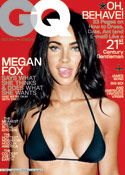Movies Home / Entertainment Channel / Bullz-Eye Home
 Buy your copy from Amazon.com
Buy your copy from Amazon.com
| Goodfellas (1990)
Director: Martin Scorsese Rating: R Category: Genre |
I’ve said it before and I’ll say it again: some classic movies are damn near impossible to review years after they’ve been released, and Martin Scorsese’s “Goodfellas” sits high on top of that list. It’s not only the greatest gangster film ever made, but it’s also one of the most glaring omissions in the history of the Oscars. The sheer fact that the Academy selected Kevin Costner’s “Dances with Wolves” for both Best Picture and Best Director should produce more than a hint of skepticism in the public’s faith for the system. But perhaps more annoying is the idea that when Scorsese finally does walk away with a golden statue, it’ll forever be in spite of snubbing him for this masterpiece.
Inspired by true events, “Goodfellas” follows the life of Henry Hill (Ray Liotta) from his days as an errand boy for the mob to his rise to power within the New York family. It all begins when Henry is hired by the local boss (Paul Sorvino) for small jobs like parking cars and pouring drinks. A natural gangster, Henry is both smart and willing, and it doesn’t take very long for the other guys on the crew to take notice. Along the way, he’s introduced to Jimmy Conway (Robert De Niro) and Tommy De Vito (Joe Pesci), and as the years past, the trio slowly becomes an unstoppable force of all things illegal. But as any devoted fan of gangster films would be quick to tell you, there’s never a happy ending in the world of crime.
The film has it all – sex, drugs, rock ‘n roll, and even a little bit of violence – but what’s most impressive is the manner in which Scorsese has pieced it all together. Running just under 150 minutes in length, “Goodfellas” doesn’t feel nearly as long as it should, nor are there any particular sequences that would have made the film better had they been cut. Furthermore, Scorsese breaks the golden rule of filmmaking (don’t depend on narration) and pulls it off with flying colors. He even unflinchingly swaps the narrator several times throughout the course of the film – with Lorraine Bracco offering an outsider’s view as Henry’s wife – without anyone so as much as giving a second thought about it.
It’s easy to tolerate when done right, and Scorsese executes it with the kind of perfection that only a seasoned veteran could. He also counterbalances his blatant disregard for the rules of cinema by introducing some pretty cool aesthetics of his own – like the much talked about steadicam shot from the streets of New York to the inside of the Copacabana (which was lovingly duplicated in Doug Liman’s “Swingers”) – not to mention the final act of the film, where Henry Hill’s last day is portrayed in amazing detail and supplemented with an amalgamated soundtrack that begins with Harry Nilsson’s “Jump into the Fire,” and ends with George Harrison’s “What is Life.”
Of course, it also helps to have the kind of talent that usually headlines Scorsese’s projects, whether it’s the reliable De Niro, the surprisingly good Liotta, or the amusingly psychotic Pesci (who also won the Oscar for Best Supporting Actor), they all deliver first-rate performances that simply wouldn’t have shined quite as bright in the hands of a lesser actor. The film is also loaded with tons of upcoming talent, from Samuel L. Jackson to half of the cast of “The Sopranos” (including Bracco, Michael Imperioli, Tony Sirico and Frank Vincent, whose character in “Goodfellas” could very well be related to the one he played in “Raging Bull”), and while it takes a lot more than a solid cast to churn out one of the best films of the 90s, “Goodfellas” definitely delivers. Featuring an excellent adaptation of the Nicolas Pileggi-penned “Wiseguys,” a rock-induced soundtrack featuring some of the biggest bands of the 60s and 70s, and an excellent study of the sociological and psychological consequences of crime and violence, “Goodfellas” is hands-down Martin Scorsese’s greatest cinematic achievement.
DVD Review:
The two-disc special edition release of “Goodfellas” offers something for everybody, with the highlights of course being the two audio commentary tracks that appear on disc one. The first track features scene select commentaries with the cast/crew including director Martin Scorsese, co-stars Ray Liotta, Lorraine Bracco, and Paul Sorvino, as well as author Nicholas Pillegi, executive producers Irwin Winkler and Barbara De Fina, cinematographer Michael Ballhaus, and editor Thelma Schoonmaker. The combined commentary is positively brimming with insight into the making of the film and stands as one of the best to ever be recorded. On the other hand, the “Cop & Crook” commentary featuring the real-life Henry Hill and FBI agent Edward McDonald is not quite as lively, but interesting nonetheless as Hill relives his glory days while sitting next to the very man who convinced him to rat on his friends.
Disc two is a little more involving, with a 30-minute making-of featurette (“Getting Made”) that covers everything from conception to post-production, a short featurette on the lifestyle of a gangster (“The Workaday Gangster”), a short discussion between other filmmaker’s on the movie’s overall influence (“Made Men: The Goodfellas Legacy”), and a four-minute montage ("Paper Is Cheaper Than Film") showcasing storyboard-to-screen comparisons.
~Jason Zingale
jzingale@bullz-eye.com
You can follow us on Twitter and Facebook for content updates. Also, sign up for our email list for weekly updates and check us out on Google+ as well.





